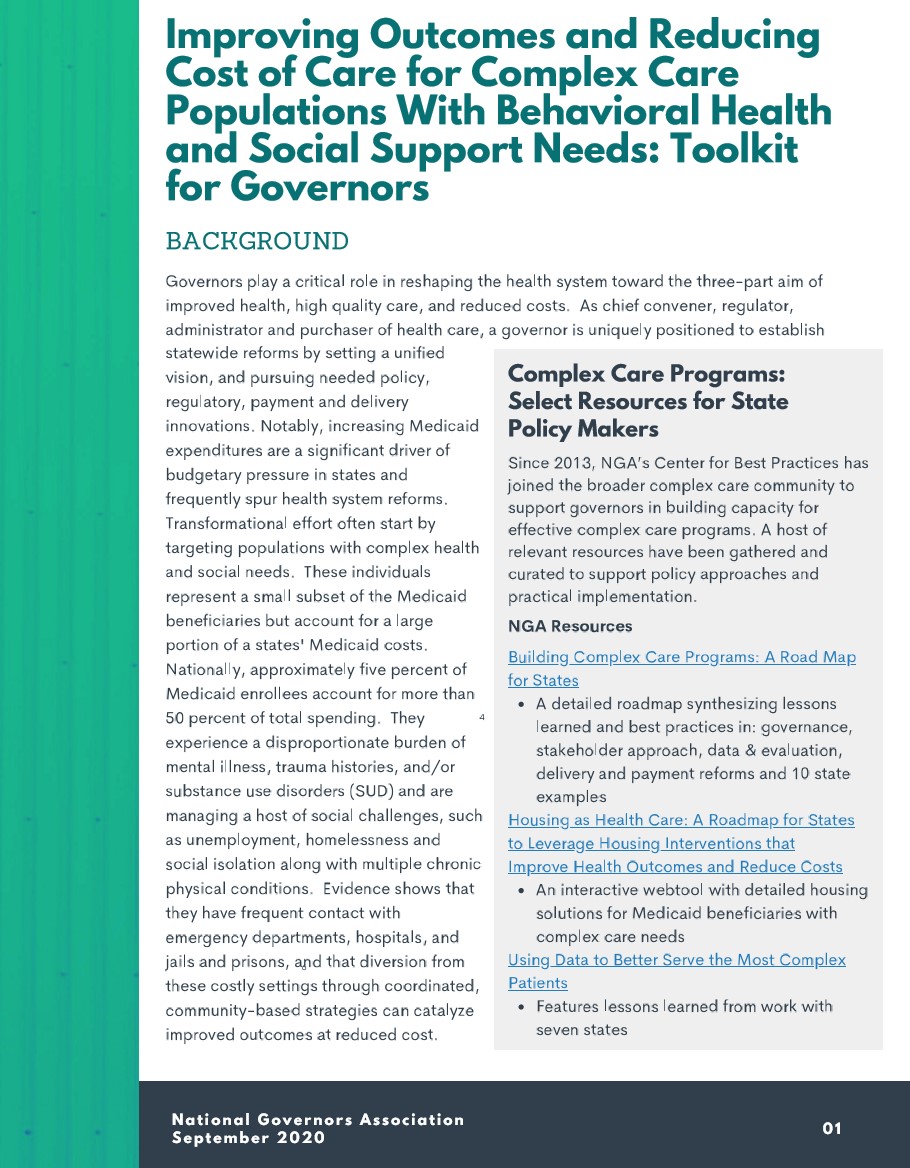The toolkit features lessons learned from Arizona and Michigan, who served as models for the participating states, and supplements the NGA road map for building complex care programs and the roadmap for a housing as health care approach for this population – both offer step-by-step guides for governors and key lessons learned from successful programs.
Background
Governors play a critical role in reshaping the health system toward the three-part aim of improved health, high quality care, and reduced costs. As chief convener, regulator, administrator and purchaser of health care, a governor is uniquely positioned to establish statewide reforms by setting a unified vision, and pursuing needed policy, regulatory, payment and delivery innovations. Notably, increasing Medicaid expenditures are a significant driver of budgetary pressure in states and frequently spur health system reforms.
Transformational effort often start by targeting populations with complex health and social needs. These individuals represent a small subset of the Medicaid beneficiaries but account for a large portion of a states’ Medicaid costs. Nationally, approximately five percent of Medicaid enrollees account for more than 50 percent of total spending. They experience a disproportionate burden of mental illness, trauma histories, and/or substance use disorders (SUD) and are managing a host of social challenges, such as unemployment, homelessness and social isolation along with multiple chronic physical conditions. Evidence shows that they have frequent contact with emergency departments, hospitals, and jails and prisons, and that diversion from these costly settings through coordinated, community-based strategies can catalyze improved outcomes at reduced cost.
Timely access to effective, community-based mental health and substance use interventions is successful but capacity needs to be scaled. Along with treatment, these interventions include safe and affordable housing, supported employment opportunities, reliable transportation, and care coordination supports. However, access to proven interventions is limited and exacerbated by historically fragmented health, behavioral health and social service systems. This is especially true for people with serious mental illness (SMI) and/or SUD, who comprise a large subset of the complex care population. Some state and local complex care programs, including the examples highlighted in this document, are successfully knitting together systems and achieving coordinated care. Governors may capitalize on lessons learned from those models and support complex care initiatives focused on this subset in their own states. Call out box #1 provides select resources to guide that effort.
Complex Care Programs: Select Resources for State Policy Makers
Since 2013, NGA’s Center for Best Practices has joined the broader complex care community to support governors in building capacity for effective complex care programs. A host of relevant resources have been gathered and curated to support policy approaches and practical implementation.
NGA Resources
Building Complex Care Programs: A Road Map for States
A detailed roadmap synthesizing lessons learned and best practices in: governance, stakeholder approach, data & evaluation, delivery and payment reforms and 10 state examples
Housing as Health Care
An interactive webtool with detailed housing solutions for Medicaid beneficiaries with complex care needs
Using Data to Better Serve the Most Complex Patients
Features lessons learned from work with seven states













